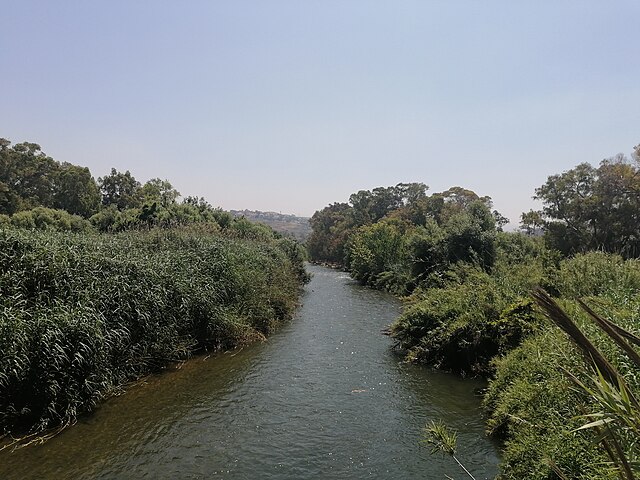Awali (river)
River in Lebanon From Wikipedia, the free encyclopedia
River in Lebanon From Wikipedia, the free encyclopedia
The Awali (Arabic: نهر الأولي / ALA-LC: Nahr al-Awalī, ancient Bostrenus / Bostrenos)[1][2] is a perennial river flowing in Southern Lebanon.[3] In ancient times it was known as Asclepius River. The 48 kilometres (30 mi) long Awali originates from the Barouk mountain at a height of 1,492 metres (4,895 ft) and the Niha mountain.

| Awali | |
|---|---|
 | |
 | |
| Location | |
| Country | Lebanon |
| Physical characteristics | |
| Source | |
| • location | Barouk and Niha mountains, Lebanon |
| Mouth | |
• location | the Mediterranean |
| Length | 48 kilometres (30 mi) |
| Basin size | 294 km2 (114 sq mi) |
| Discharge | |
| • average | 10.1625 m3/s (358.89 cu ft/s) |
 | |
The Awali is supplemented by two tributaries, the Barouk and Aaray rivers. The Awali is also known as the Bisri river in its upper section; it flows through the western face of Mount Lebanon and into the Mediterranean. The Awali river has a discharge of 10.1625 m3/s (358.89 cu ft/s), it forms a watershed that has an area of about 294 km2 (114 sq mi).[4] The river flows into Joun Lake, which is part of the Bisri Dam project to improve the supply of fresh water to the region.[5][6] A large portion of the Bisri Dam project funding, from the World Bank, was cancelled by the World Bank in September 2020.[7]
Seamless Wikipedia browsing. On steroids.
Every time you click a link to Wikipedia, Wiktionary or Wikiquote in your browser's search results, it will show the modern Wikiwand interface.
Wikiwand extension is a five stars, simple, with minimum permission required to keep your browsing private, safe and transparent.